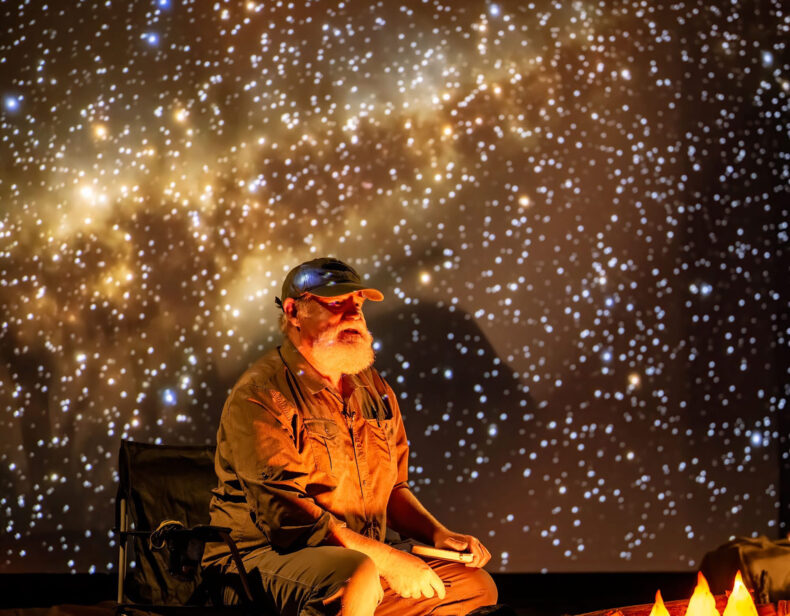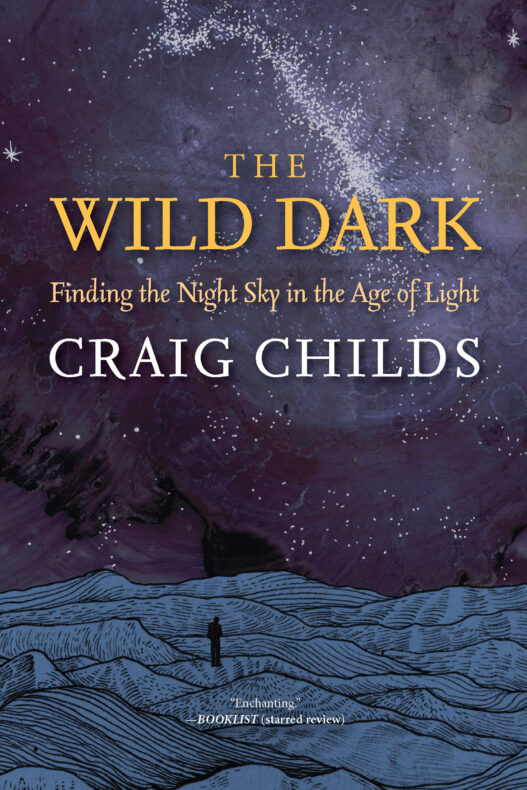
This coming Monday is the new moon, which means by tonight we are in the soup. There’s nothing to block the stars but clouds…and us.
Every month has its dark nadir and we’re pretty much there, stars as bright and numerous as they’ll ever be. That’s the thing about a full night sky, it’s as dark and rich now as it would have been 10,00 years ago, if you’re in the right place.
A big moon all bright and milky is one kind of night sky. No moon at all, we see our galaxy from the inside out.
A book of mine came out this week, called “The Wild Dark,” which is about finding dark skies during the most well-lit time in Earth’s history. What I’m looking for I refer to as “old growth dark.” You know the stuff, and it’s disappearing.
A global study among 51,351 citizen scientists using star charts around the world shows a dramatic decline in how much of the night sky we’ve lost between 2011 and 2022. If 200 stars could be seen when the study began, 100 were still visible when it finished. You get the point. It’s going downhill fast. The outcome is not only what this does to our minds and perception, but to our bodies. Cancers and a host of other maladies attend our new era of brilliance, our circadian rhythms derailed, throwing off a litany of physical functions from metabolism to sleep. We are tangibly fucking ourselves up with all this light
No matter the climate catastrophe in the planet’s history or the asteroid impact, there were always night skies, even if witnessed through an enormous ejecta cloud. The lack of darkness is a new and unique kind of catastrophe. We’ve always faced away from the sun for half our rotational period and toward it for the other half, two sides of the coin, and now our nights are lit up, too. Eighty percent of the human population can no longer see the Milky Way. Stars are being plucked from the sky and I ask the question, what does this do to us?
I wrote this book to show a wanton dark sky, looking up with no holds barred, old growth dark. Of course, spoiler, I find this kind of sky is not dark at all. It radiates with lilac intensity. A shadow is cast from interplanetary dust particles reflecting sunlight back at us, and also from the light of the stars themselves. The Milky Way becomes so bright it casts a shadow along with the high-magnitude star-heavy region of Sagittarius.
The book follows a trek I took a year ago last November, mountain bikes loaded like mules, no resupply other than caches we set to get us 200 miles out of the blast zone of Vegas into what classifies as a Bortle 1, the darkest and most star-filled sky a person on Earth can witness. Bikes were the vehicle of choice because of their pace, offering a stark difference night by night. Two of us set off on this venture, old friends who met as guides years ago taking high school kids from Los Angeles on trips into the desert. You can see why I chose him as a companion for this book. We figured we’ve spent at least 400 nights together on the ground. Some of the kids we took out had never seen stars and I was with them one night, having my group all lie on their backs and look up (I was in my twenties and wildly idealistic), when a tiny shooting star streaked across the sky. I heard a girl say, “What was that?”
This is the stuff of my new book, and thank you for reading this far into my shameless pitch. This week is the official pub date, smack in the waning moon losing its light night by night, stars pouring back in. The single purpose of what I wrote is to lead readers outside at night and to turn their heads up. That’s it, a whole goddamned book. I don’t care if you’re on the outskirts of Baltimore or in the brilliantly dark heart of a Bortle 1 in Nevada, I know what you’ve got in your sky. I’ve been to New York City in the past two weeks and yes I did manage to find both Mars and Jupiter in the west between buildings. The universe is up there. It’s a matter of looking.

Photo of me presenting on this book tour by Bob Maynard; upcoming events in Salt Lake City, Durango, Crested Butte, CO, etc.
Fabulous book!
Have book coming as a birthday gift. Looking up every night from Prather CA. Thanks for opening my eyes.
Craig – Please keep us informed as to your event tour, as it’d be great to catch a ‘live’ sample! Although I’m leaving the area (Cedaredge) soon, I’d like to get to one of your readings.
North of Cedaredge on Grand Mesa we love our dark skies! Hope to see you here again sometime.
I’m so looking forward to reading your new book. My friend in Lake City, Michael Underwood, recommended Animal Dialogues, and I really enjoyed it. You should come to Lake City, an IDSky community in late June for their Dark Sky event.
Hello Craig,
Loved reading about the launch of your new book, The Wild Dark on the last word on nothing, and looking forward to buying your book- Love from Australia
Good to see another eloquent plea for the night. So few can see the stars; so many yearn to see. Have not yet read your book of course, but I hope people out there know that this loss is absolutely not necessary. Quantitative research in the last 20 years has proven that we can have the lighting we want on the ground and still see the Milky Way. Flagstaff Arizona has proven it can be done.
Believe it. Then make it true.